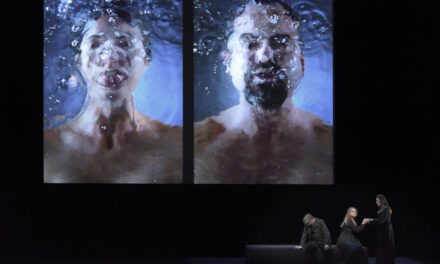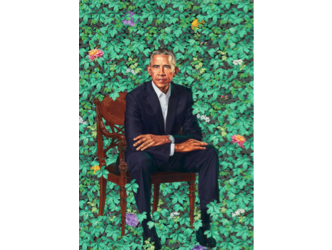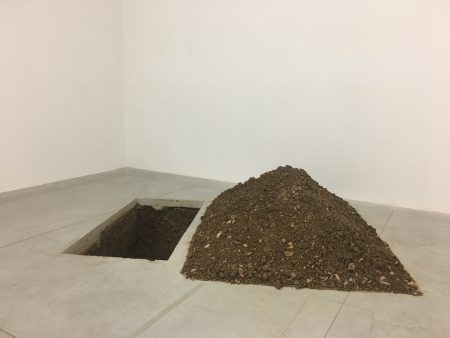Guggenheim
Not all artists merit the Guggenheim. The famous spiral-shaped building in New York designed by Frank Lloyd Wright is a death knell for those whose career is half-baked, overly repetitive and insubstantial. Among the great triumphs of a fruitful dialogue between art and architecture I can recall, for example, the masterful Alberto Burri retrospective in 2015, “The Trauma of Painting”, which restored the significance of the Italian abstract painter, or in 2019 the revelation of the ground-breaking abstract painter, Hilma af Klint, despite the lack of perspective for her creation in terms of what was happening at the time (See here the report about Rem Koolhaas at the Guggenheim New York).
80 years of creation
I have not seen the Alex Katz (born in 1927) retrospective being staged until 20 February at this remarkable museum. His works on show here span 80 years but I can guess that it will showcase the best. Imagine an artist who – since the 1950s – has always painted in the same style, with more or less the same subjects, using very similar colours.
Alex is a painting machine
The magic of his practice is due to the fact that within his genre the 95-year-old painter always manages to regenerate himself. In the catalogue of the Guggenheim exhibition the most surprising but also the richest text is the one written by Arthur Jafa (see here the report about his exhibition at the Luma foundation), who we might not suspect to have such an affinity with the older artist. “Alex is a model of how to conduct your life as an artist. The first thing that’s impossible not to be startled by is the amount of work he’s doing. Alex is a painting machine. I don’t think of him as a very old man, just older than me because he’s so spry.”
I can’t resist the temptation to republish the interview I did with him a year and a half ago on the occasion of his exhibition at the Thaddaeus Ropac gallery in Paris.
Resistance
To illustrate the continuity of his style, even Alex Katz himself talks about “resistance”. He says, smiling: “my success is well deserved.” On the day of the interview he is in a particularly good mood. Wearing socks featuring a colourful hotdog motif and generally looking cool, he travelled from New York to Paris especially for the exhibition. We started by talking about Botticelli, who was the subject of an exhibition in Paris. There you could see a technique that Alex Katz also uses: the cut-out. These are paintings that have been cut into the shape of the subjects they depict. Botticelli painted Christ.
His wife Ada
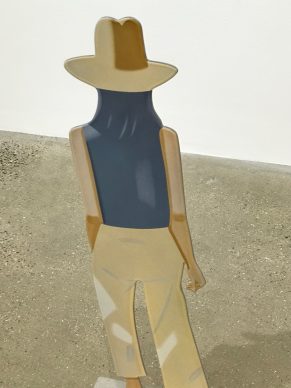
The American artist painted his wife, Ada, whose portrait is captured in this very particular form, somewhere between painting and sculpture. These are the artist’s most striking works. After destroying a lot of his work in his youth, for many years now Alex Katz has been producing prolifically and selling it all. Katz explains how he wanted to produce a form of painting that was post-abstraction. Jafa writes: “Alex’s portraits are iconic – that’s indisputable – but I’m personally obsessed with his proto-abstractions, for want a better way to describe them. Because they are on the cusp. You don’t know if you are standing in front of an unstable visual field or you’re looking at a thing that’s unstable – in other words, the very antithesis of a still life”.
Flat kind of painting
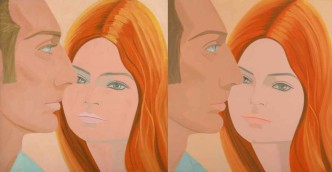
Ordinarily Katz is particularly known for his portraits, more specifically for his figures depicted in urban spaces. People tend to assimilate him into the Pop Art movement because he paints subjects taken from daily life, but his style existed before the movement fully emerged. And in any case the artist isn’t fond of objects from popular culture like those found in Pop Art. Alex Katz’s unique style is a flat kind of painting, with no texture or perspective, which is ultimately very American, in which the colours are contrasting.
The time of the day
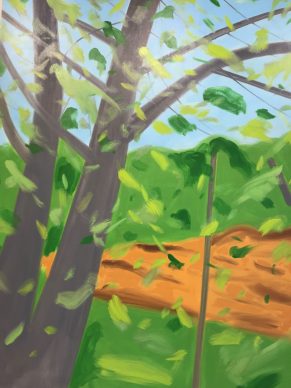
He explains that what matters to him is the idea of the present moment, without narrative, and even more so the hues, the effects of the light: “I can tell you exactly what time of day it is in my paintings.” The artist confesses: “I have always wanted to do something immediate. Eternity is the immediate present. The painter shows you what he is looking at.” He adds: “The paintings themselves change, every ten years or so. Because the way that we look at them evolves. Painting is the reflection of a culture at a particular moment in time.”
Cezanne as reference
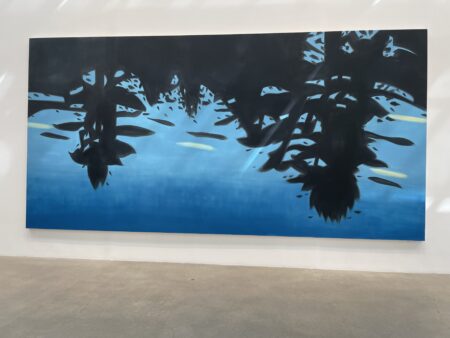
Since he was 16 years old Alex Katz has used Paul Cézanne as a reference (See here the report about the Cezanne exhibition at Tate gallery taking place now in London). “I went to see an exhibition of his work in Philadelphia. At first glance he didn’t seem to have a good grasp of the technique but when I left and I took the train, looking out of the window I saw that all the landscapes were by Cézanne. I like Cézanne for the power of his emotional content.”
His own muse
When we asked the artist, in 2021, at the age of 94, what he hoped to do next he replied that he wanted to carry on not getting bored. As Arthur Jafa would say: “Alex has always followed his own muse”.
Support independent news on art.
Your contribution : Make a monthly commitment to support JB Reports or a one off contribution as and when you feel like it. Choose the option that suits you best.
Need to cancel a recurring donation? Please go here.
The donation is considered to be a subscription for a fee set by the donor and for a duration also set by the donor.

